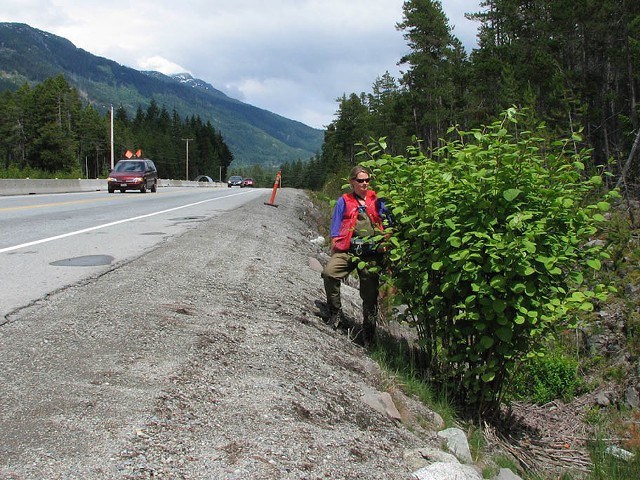The fight against invasive species got a major boost last week when the provincial government announced $58,000 in funding to help control the spread of invasive plants in the Sea to Sky.
The grant will go to the Sea to Sky Invasive Species Council (SSISC), which will use the funds to treat high-priority sites, survey invasive plant populations and raise public awareness on proper invasive species management.
"I think it's a response to demand from the public for the province to take responsibility and take invasive plants seriously," said SSISC director Clare Greenberg. "In B.C., a lot of invasive plants and species are really not here in huge amounts just yet, so throwing money at it now is going to save B.C. a lot of money in the long run."
Victoria stepped up its efforts against invasives in 2016 with a 26-per-cent increase in funding to the SSISC over last year. The grant was one of 31 awarded across B.C. totaling more than $1.7 million.
While he applauded the move, local biologist Leslie Anthony and writer of the upcoming book on invasive species Aliens Among Us said the funding is a small fraction of what it would cost to solve B.C.'s invasive species problem.
"It's definitely been the case that (the B.C. government) has been slow to react to things and they never give enough resources, money or manpower to anything to actually solve the problem," he said. "If they were to do that in this case, I couldn't even begin to ballpark but it would be in excess of $20 million to fully deal with."
Invasive plants are species that have been introduced from outside of B.C. that displace native vegetation and can have serious environmental and economic consequences. Priorities for the SSISC this year will be to address problem sites in remote areas where species such as Japanese knotweed have taken root. The council will also switch focus to aquatic invasive species such as yellow flag iris and flowering rush, and will be surveying Whistler's waterways to get a better handle on the situation.
Much of the remaining work in Whistler will centre on the council's various public education campaigns. The group will participate in a North America-wide program called Play Clean Go, which encourages outdoor recreationalists to check their boots and tires for invasive plant seeds before moving from site to site.
Another is called Don't Let It Loose, which urges residents to refrain from releasing unwanted pets into Whistler's rivers and lakes.
"We do have problems at Alta Lake where people have released goldfish, and goldfish are an invasive species, believe it or not, and can outcompete native fish."
While invasive plants get the lion's share of government funds, Greenberg said there is a serious "funding gap" when it comes to invasive animals. Thanks to a grant from the Community Foundation of Whistler, however, the SSISC will conduct an American bullfrog survey in Squamish this year after the invasive species was found in the Lower Mainland.
The council is also in talks with the province to offer up a site in Whistler as part of the Ministry of Environment's efforts to catalogue all of B.C.'s native and invasive fish species using an innovative surveying method called eDNA testing.
"Fish and other species in a lake will scoff off their skin cells and will excrete poop, essentially, that has a DNA signature in it specific to that species," Greenberg explained. "So when they take a sample of water from a lake it will contain eDNA of all the species that have passed through the vicinity of that water body in the past (seven to 21 days). You can quickly get a snapshot of which species are in that lake by just scooping up one litre of water."
For more on invasive species management in the corridor, visit www.ssisc.info.




